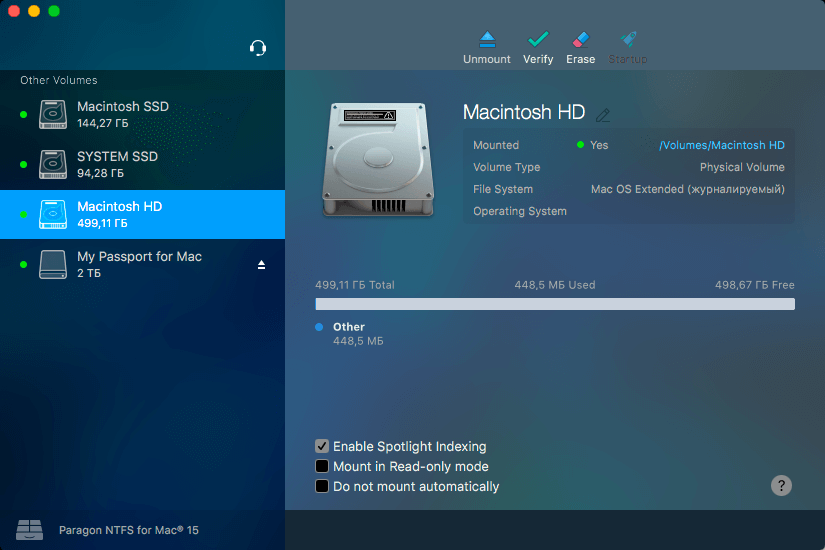Sep 24, 2018 Microsoft NTFS for Mac by Tuxera 2019 supports macOS Catalina, Mojave, High Sierra, and Sierra, OS X El Capitan, and all previous OS X versions. Linus Tech Tips. How To Mount & Use. In order to use Tuxera NTFS fo Mac you need to manually approve its kernel extension.OK カーネル拡張は許可を必要とします Mac用のTuxera NTFSを使用するため、システム環境設定→セキュリティとプライバシー中のカーネル拡張を手動で許可させなければなりません。. How to Approve Egnyte's Kernel Extension in macOS High Sierra and Mojave. (2/14/2020) Egnyte Protect 10.3 (30 January, 2020) WebEdit 2.4.2 for Windows and Mac. Gain big discounts up to 40% OFF by using the following Tuxera coupons on Tuxera NTFS 2016 purchase. All the available and valid promo codes will be update instantly in this topic. Tuxera NTFS 2016 Features Tuxera NTFS 2016 comes in the following key features Compatibility: Supports Mac OS X 10.11 El Capitan, 32-bit. The software fully supports all versions of Mac OS X from 10.4 (Tiger) onwards, including the new 64-bit kernel introduced with Snow Leopard and the upcoming Mac OS X 10.7 (Lion) and comes with advanced features only available from Tuxera such as support for NTFS extended attributes. Everything you need to know about Tuxera NTFS for Mac. Everything you need to know about Tuxera NTFS for Mac. Everything you need to know about Tuxera NTFS for Mac.
| Developer(s) | Tuxera Inc. |
|---|---|
| Stable release | |
| Written in | C |
| Operating system | Unix-like, Haiku |
| Type | |
| License | Dual-licensed GNU GPL/Proprietary[citation needed] |
| Website | www.tuxera.com/community/open-source-ntfs-3g/ |
NTFS-3G is an open-sourcecross-platform implementation of the Microsoft WindowsNTFS file system with read-write support. NTFS-3G often uses the FUSEfile system interface, so it can run unmodified on many different operating systems. It is runnable on Linux, FreeBSD, NetBSD, OpenSolaris, illumos, BeOS, QNX, WinCE, Nucleus, VxWorks, Haiku,[1]MorphOS, Minix, macOS[2] and OpenBSD.[3][4] It is licensed under the GNU General Public License. It is a partial fork of ntfsprogs and is under active maintenance and development.
NTFS-3G was introduced by one of the senior Linux NTFS developers, Szabolcs Szakacsits, in July 2006. The first stable version was released on 2007-02-21 as version 1.0. The developers of NTFS-3G later formed a company, Tuxera Inc., to further develop the code. NTFS-3G is now the free 'community edition',[1][failed verification] while Tuxera NTFS is the proprietary version.
Features[edit]
NTFS-3G supports all operations for writing files: files of any size can be created, modified, renamed, moved, or deleted on NTFS partitions. Transparent compression is supported, as well as system-level encryption.[5] Support to modify access control lists and permissions is available.[6] NTFS partitions are mounted using the Filesystem in Userspace (FUSE) interface. NTFS-3G supports hard links, symbolic links, and junctions. With the help of NTFS reparse point plugins, it can be made to read chunk-deduplicated files, system-compressed files, and OneDrive files.[7] NTFS-3G provides complete support and translation of NTFS access control list (ACL) to POSIX ACL permissions. A 'usermap' utility is included to record the mapping from UIDs to Windows NT SIDs.
NTFS-3G supports partial NTFS journaling, so if an unexpected computer failure leaves the file system in an inconsistent state, the volume can be repaired. As of 2009, a volume having an unclean journal file is recovered and mounted by default. The ‘norecover’ mount option can be used to disable this behavior.[8]
Performance[edit]
Benchmarks show that the driver's performance via FUSE is comparable to that of other filesystems' drivers in-kernel,[9] provided that the CPU is powerful enough. On embedded or old systems, the high processor usage can severely limit performance. Tuxera sells optimized versions of the driver that claims to have improved CPU utilization for embedded systems and MacOS.[10]
The slowness of NTFS-3G (and FUSE in general) on embedded systems is attributed to the frequent context switching associated with FUSE calls. Some open-source methods provided to reduce this overhead include:[11]
- The underlying FUSE layer has an option called
big_writesto use larger blocks when writing. Using a larger block means fewer context switches. This is in fact a solution recommended by Tuxera.[12] A patch is available to use an even larger block.[13] - There is also a Linux kernel option called
lazytimeto reduce the writes on file access. - Synology Inc. uses a modified NTFS-3G on their NAS systems. It replaces the ntfs-3g inode caching
CACHE_NIDATA_SIZEwith a different mechanism with unsure benefit. (It also includes an alternative Security Identifier translation for the NAS.)
History[edit]
Kernel Extension Macos 10. 14 Tuxera Ntfs Windows 10

- NTFS-3G forked from the Linux-NTFS project on October 31, 2006.
- On February 21, 2007, Szabolcs Szakacsits announced 'the release of the first open source, freely available, stable read/write NTFS driver, NTFS-3G 1.0.'
- On October 5, 2009, NTFS-3G for Mac was brought under the auspices of Tuxera Ltd. and a proprietary version called Tuxera NTFS for Mac was made available.[14]
- On April 12, 2011, it was announced that Ntfsprogs project was merged with NTFS-3G.[15]
- NTFS-3g added TRIM support in version 2015.3.14.
See also[edit]

References[edit]
Tuxera Ntfs For Windows
- ^ abc'STABLE Version 2017.3.23 (March 28, 2017)'. Tuxera. Tuxera. 2017-03-23. Retrieved 2017-03-23.
- ^NTFS-3G for Mac OS X ('Catacombae')
- ^'OpenBSD adds fuse(4) support for adding file systems in userland'. OpenBSD Journal. 2013-11-08. Retrieved 2013-11-08.
- ^'ntfs_3g-2014.2.15 – FUSE NTFS driver with read/write support'. OpenBSD ports. 2014-01-05. Retrieved 2015-02-14.
- ^NTFS-3G FAQ
- ^NTFS-3G: NTFS Driver with Ownership and permissions
- ^André, Jean-Pierre (March 1, 2019). 'NTFS-3G: Junction Points, Symbolic Links and Reparse Points'. jp-andre.pagesperso-orange.fr.
- ^NTFS-3G 2009.2.1 changelog
- ^Comparing NTFS-3G to ZFS-FUSE for FUSE Performance
- ^Performance at Tuxera
- ^Gothe, Markus. 'On Linux NTFS Performance'. Retrieved 3 October 2019.
- ^'NTFS-3G Questions'. Tuxera.
Workaround: using the mount option “big_writes” generally reduces the CPU usage, provided the software requesting the writes supports big blocks.
- ^Wang, M. 'linux - Disadvantages of ntfs-3g `big_writes` mount option'. Unix & Linux Stack Exchange. Retrieved 3 October 2019.
- ^NTFS-3G for Mac OS X is now Tuxera NTFS for Mac
- ^Release: NTFS-3G + NTFSPROGS 2011.4.12